|
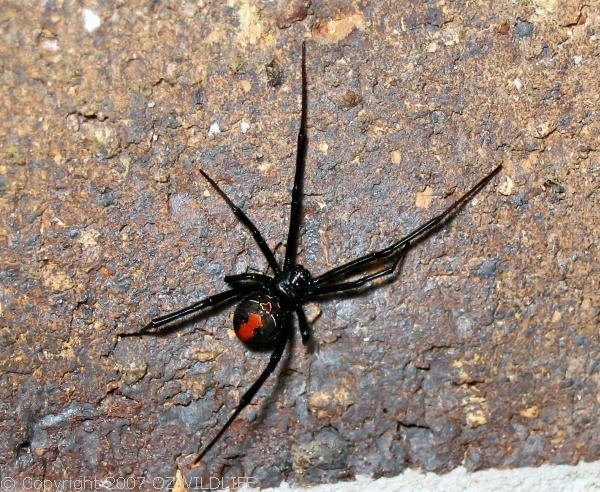
Redback Spider on house brick.
Photograph copyright: ozwildlife - all rights reserved. Used with permission.
|
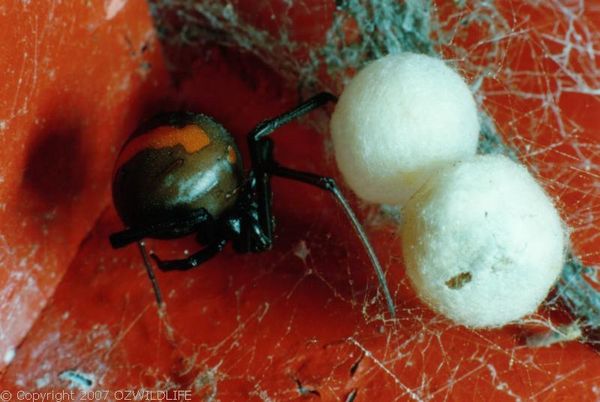
Female Redback Spider with Egg Sacs. Photographed under house eaves. Luckily the spider stays put in its web most of the time, making photography fairly easy.
Photograph copyright: ozwildlife - all rights reserved. Used with permission.
|
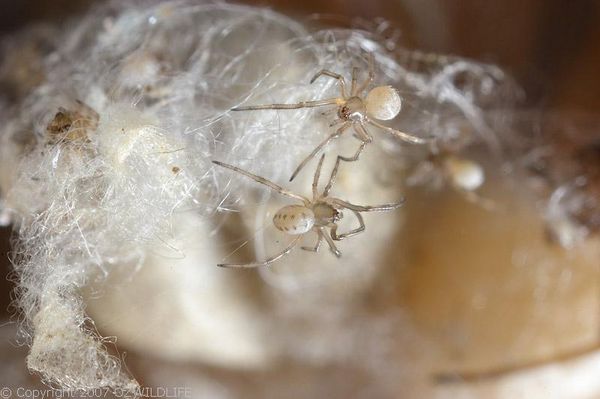
Baby Redback spiders are white with darker spots on back
Photograph copyright: ozwildlife - all rights reserved. Used with permission.
|
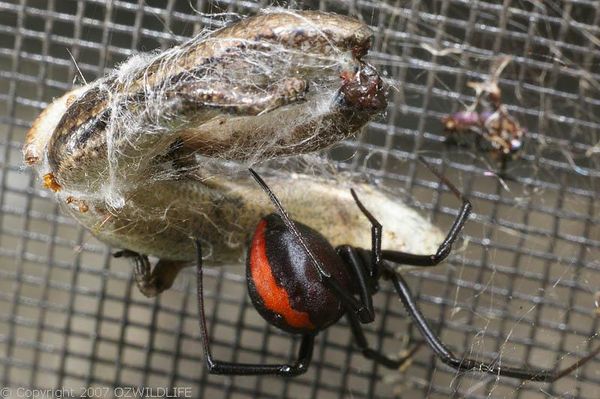
She sometimes catches small skinks in the web. These are sucked dry and remains are cut from web and dropped to ground.
Photograph copyright: ozwildlife - all rights reserved. Used with permission.
|
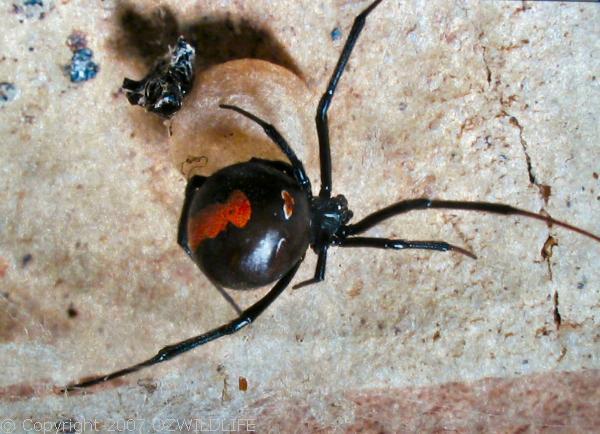
Female Redback Spider showing distinctive red stripe. These are very common around the house often found under eaves, under patio chairs, around garage doors or any similar dry sheltered place. Sometimes they come into the house where they usually end up euthanased with a fatal dose of insecticide, or squashed with a heavy object.
Photograph copyright: ozwildlife - all rights reserved. Used with permission.
|
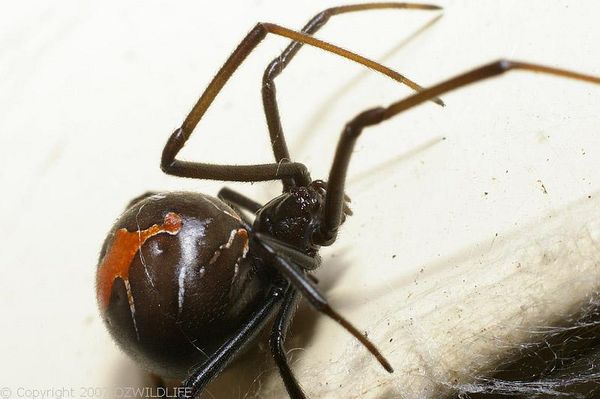
Female Redback
Photograph copyright: ozwildlife - all rights reserved. Used with permission.
|
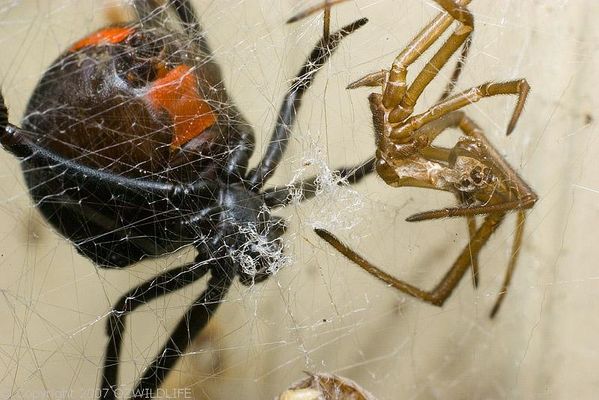
Female showing red hourglass shape on underside. She has remains of huntsman spider in web.
Photograph copyright: ozwildlife - all rights reserved. Used with permission.
|
|
|
REDBACK SPIDER FACTS |
Description
The Redback Spider is a black spider with round body. The female is black with red stripe on back. The newly-hatched, baby spiders are creamy white with darker spots on their back. As the young grow they get darken, and develop red or orange hourglass shaped marking on underside, red or orange stripe on back. The head and legs may be brown rather than black, and the body can have white or cream markings coming from the red or orange stripe. Male Redback Spiders are much smaller than the female and are rarely seen. The Redback Spider belongs to the same genus as the American Black Widow Spider.
Size
Female 12mm, male 3mm. Female has pea-sized body.
Habitat
Dry sheltered areas around homes, gardens and parks. Sometimes found indoors.
Food
insects, other spiders, and other small creatures that get tangled in their web such as small lizards.
Breeding
Lays eggs in round egg sacs that are hung in the web. They lay between 40 and 300 eggs in each sac and usually make three to five sacs at one time. The adult female Redback Spider remains with the eggs until they hatch after about 14 days. The young often emerge during damp weather.
Range
occurs throughout Australia, and is most common in settled areas where the natural environment has been disturbed
Notes
The Redback is dangerous, but not aggressive as it spends most of its time in the web. The bite is not painful initially, with intense pain developing after about 5 minutes. Symptoms include sweating at the site of the bite, muscular weakness, paralysis, stiffness, loss of coordination, tremors. However, the diagnostic indication of a Redback Spider bite is localised sweating at the site of the bite.
Classification
| Class: | Arachnida | | Order: | Araneomorphae | | Family: | Theridiidae | | Genus: | Latrodectus | | Species: | hasselti | | Common Name: | Redback Spider |
|
|

